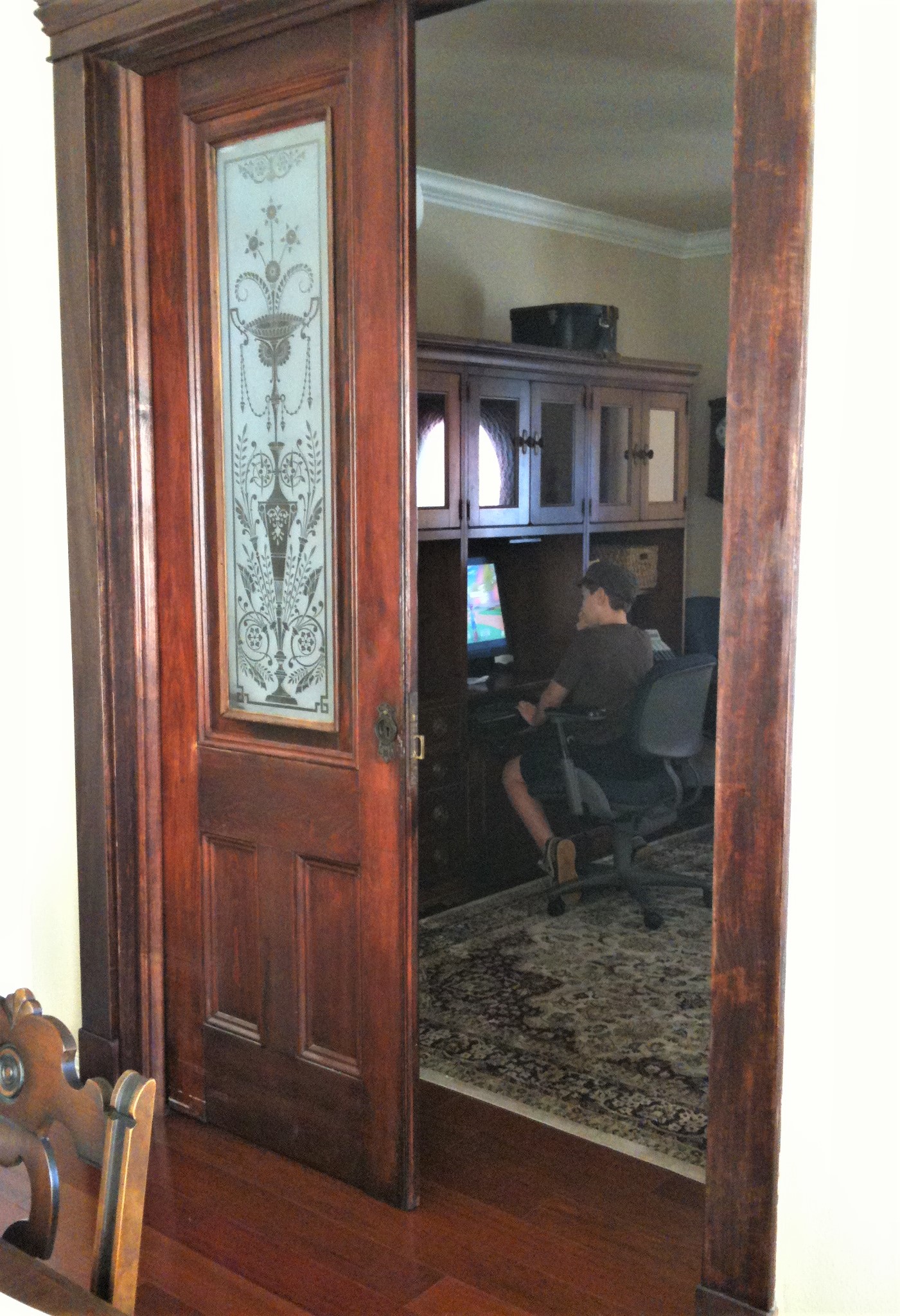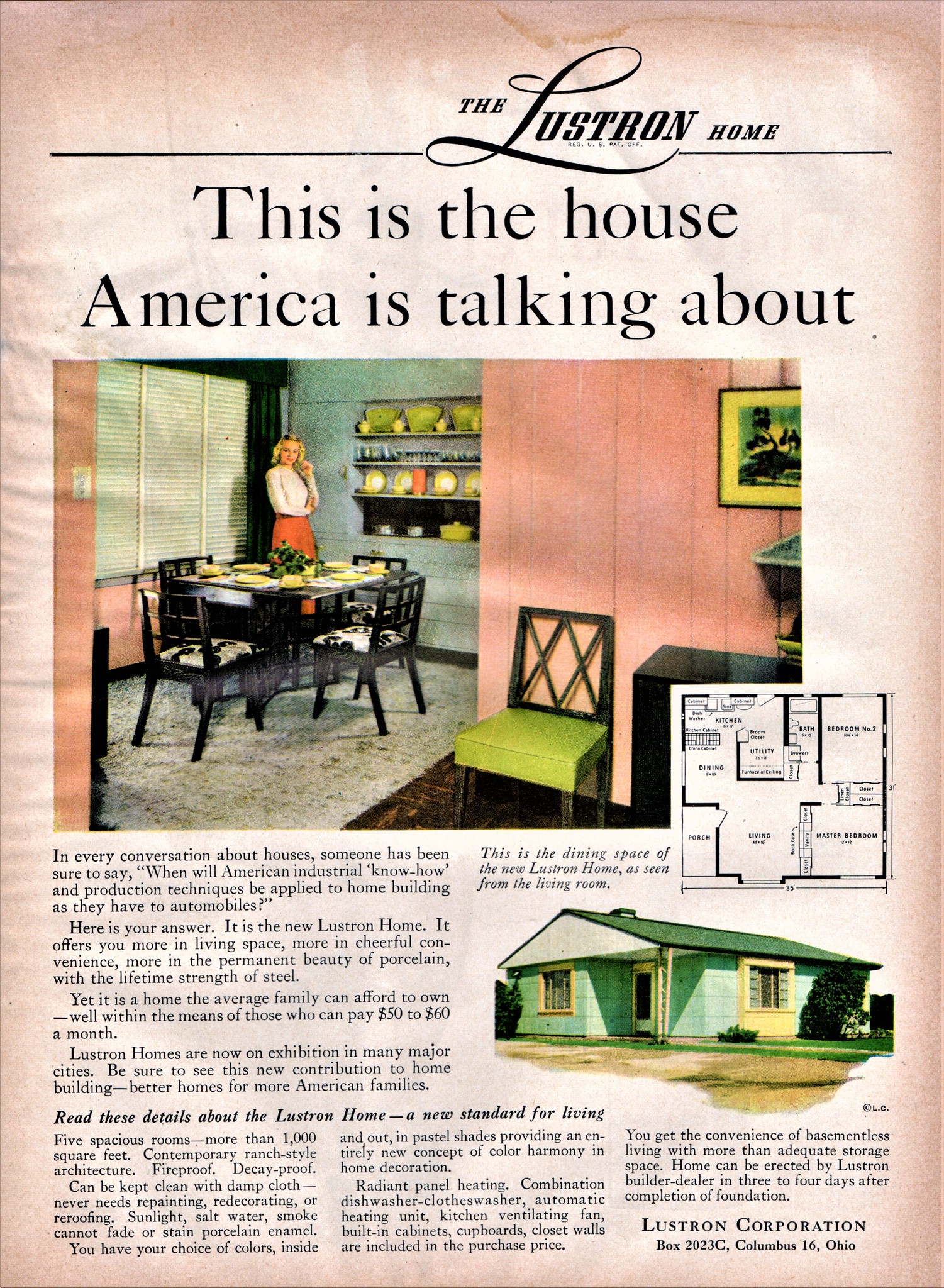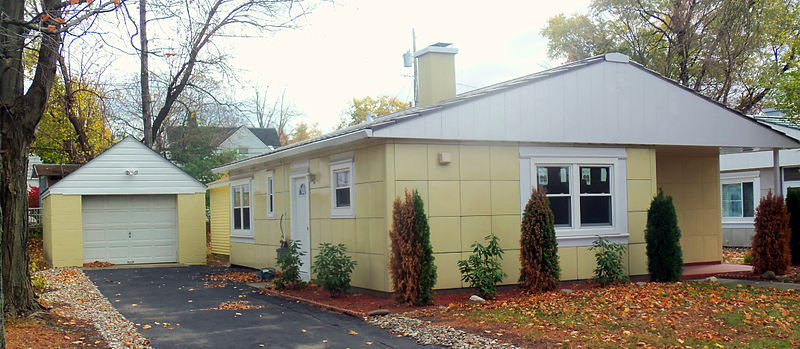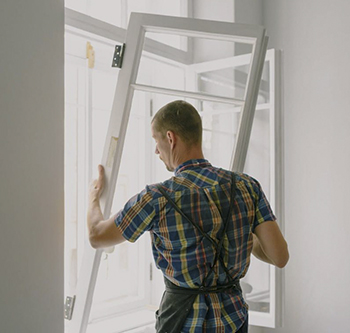Pocket door

|
| This photograph shows two pocket doors - one is open one is closed. The etched glass in the doors is roughly 150 years old. |
Contents |
[edit] Introduction
A pocket door is a sliding door that disappears completely into a space that has been created in the adjacent wall. Single or double versions are available. Unlike other types of sliding doors, most pocket doors are not made from glass, although they may feature glass windows, sometimes for decorative purposes.
[edit] History
Pocket doors originated in the 1850s, when they appeared both in the UK and the US. Their popularity grew in the 1880s as technological improvements were made to the installation methods. However, in the mid 1920s, their popularity began to fade and hinged doors became more fashionable. They once again sprang into favour in the 1950s, particularly in post-war housing.
[edit] Pocket doors in Lustron homes
Pocket doors were a common feature in a type of affordable housing in the US called Lustron houses. More than 1,000 of these homes were built after World War II to help address the housing shortage for returning veterans.

|
| This Lustron home ad is from 1948. |
Prefabricated from enameled steel, Lustron houses were designed by Carl Strandlund. Their primary purpose was to provide durable housing that was efficient in terms of space usage. According to the sales brochure, "all the floor space in the house is living space." This is why pocket doors were used throughout many of the model homes.
In the Lustron homes, the pocket doors were made from the same moulded steel and porcelain enamel coating as the interior and exterior panels and cabinetry; the pocket doors arrived preinstalled in the walls.
The majority of remaining Lustron homes can be found in the state of Illinois, although there are surviving homes throughout the US. Some Lustron homes have been included on the National Register of Historic Places.

|
| This is one of five homes included in the Lustron houses of the Jermain Street Historic District in Albany, New York, USA. |
[edit] Applications
Pocket doors continue to be useful in modern applications and renovations, especially in situations where there is not enough space for a standard door. Because they do not require the same amount of clear space to open and close, they can free up a significant portion of a room. This can be useful in small rooms.
Pocket doors are frequently found in bathrooms and cupboards. They are also effective in spaces such as workshops, home offices, libraries, sitting rooms and other multipurpose rooms.
[edit] Installation
Most pocket doors are installed on tracks on the floor or on rollers in a track in the ceiling. There is also an open pocket door, which is a wall-hung sliding door. This option can be suitable for installations that require ease of use and access.
[edit] Related articles on Designing Buildings Wiki
Featured articles and news
Licensing construction in the UK
As the latest report and proposal to licence builders reaches Parliament.
Building Safety Alliance golden thread guidance
Extensive excel checklist of information with guidance document freely accessible.
Fair Payment Code and other payment initiatives
For fair and late payments, need to work together to add value.
Pre-planning delivery programmes and delay penalties
Proposed for housebuilders in government reform: Speeding Up Build Out.
High street health: converting a building for healthcare uses
The benefits of health centres acting as new anchor sites in the high street.
The Remarkable Pinwill Sisters: from ‘lady woodcarvers’ to professionals. Book review.
Skills gap and investment returns on apprenticeships
ECA welcomes new reports from JTL Training and The Electrotechnical Skills Partnership.
Committee report criticises UK retrofit schemes
CIOB responds to UK’s Energy Security and Net Zero Committee report.
Design and construction industry podcasts
Professional development, practice, the pandemic, platforms and podcasts. Have we missed anything?
C20 Society; Buildings at Risk List 2025
10 more buildings published with updates on the past decade of buildings featured.
Boiler Upgrade Scheme and certifications consultation
Summary of government consultation, closing 11 June 2025.
Deputy editor of AT, Tim Fraser, discusses the newly formed society with its current chair, Chris Halligan MCIAT.
Barratt Lo-E passivhaus standard homes planned enmasse
With an initial 728 Lo-E homes across two sites and many more planned for the future.
Government urged to uphold Warm Homes commitment
ECA and industry bodies write to Government concerning its 13.2 billion Warm Homes manifesto commitment.
From project managers to rising stars, sustainability pioneers and more.
Places of Worship in Britain and Ireland, 1929-1990. Book review.























